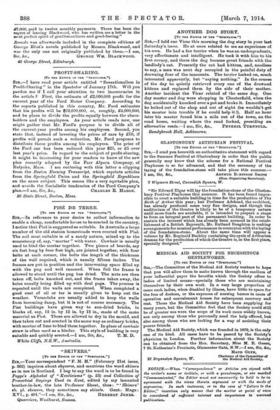PISE DE TERRE.
[To Ts. Bones or Tor ..BrscrATOS.”1 Sts,—In reference to your desire to collect information to enable a cheap, comfortable house to be erected in the country, 1 notice that Pise is suggested as suitable. In Australia a large number of the old station homesteads were erected with Pis& The soil most suitable is of a sandy nature, mixed up to the consistency of, say, " mortar " with water. Cowbair in usually used to bind the mortar together. Two pieces of boards, say n ix feet long by four feet high, are jointed together, with four bolts at each corner, the bolts the length of the thickness of the wall required, which is usually fifteen inches. The frames are put in position and the intervening space filled up with the pug and well rammed. When full the frame is allowed to stand until the pug has dried. The nuts are then taken off, bolts knocked out, and the frame taken away, the holes usually being filled up with deal pegs. The process is repeated until the walla are completed. When completed a good coat of oil or tar is usually given to keep out the weather. Verandahs are usually added to keep the walls from becoming damp, but it is not of course necessary. The Fist buildings have given way to sun-dried bricks, in blocks of, say, 12 in. by 12 in. by 12 in., made of the sates material as Pis& These are allowed to dry in the mould, and then taken out and erected in the same way as ordinary bricks, with mortar of lime to bind them together. In place of cowhair straw is often used as a binder. This style of building is very suitable and quickly erected.—I am, Sir, &o., T. M. D. White Clip, N.S.W., Australia.














































 Previous page
Previous page